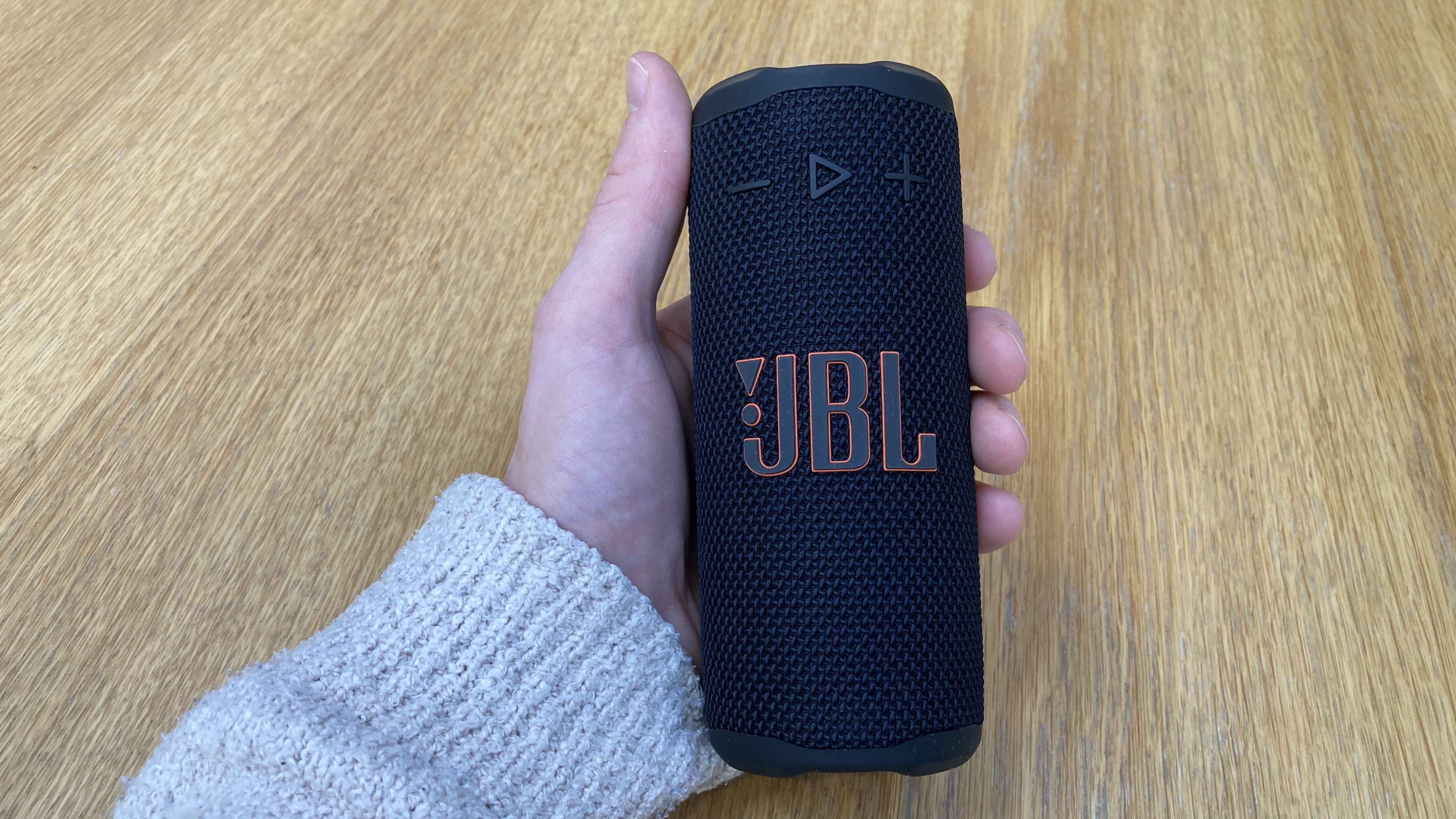Sonos Era 300 vs Apple HomePod 2: which smart speaker is better?
Can Sonos' new speaker trump Apple's best?
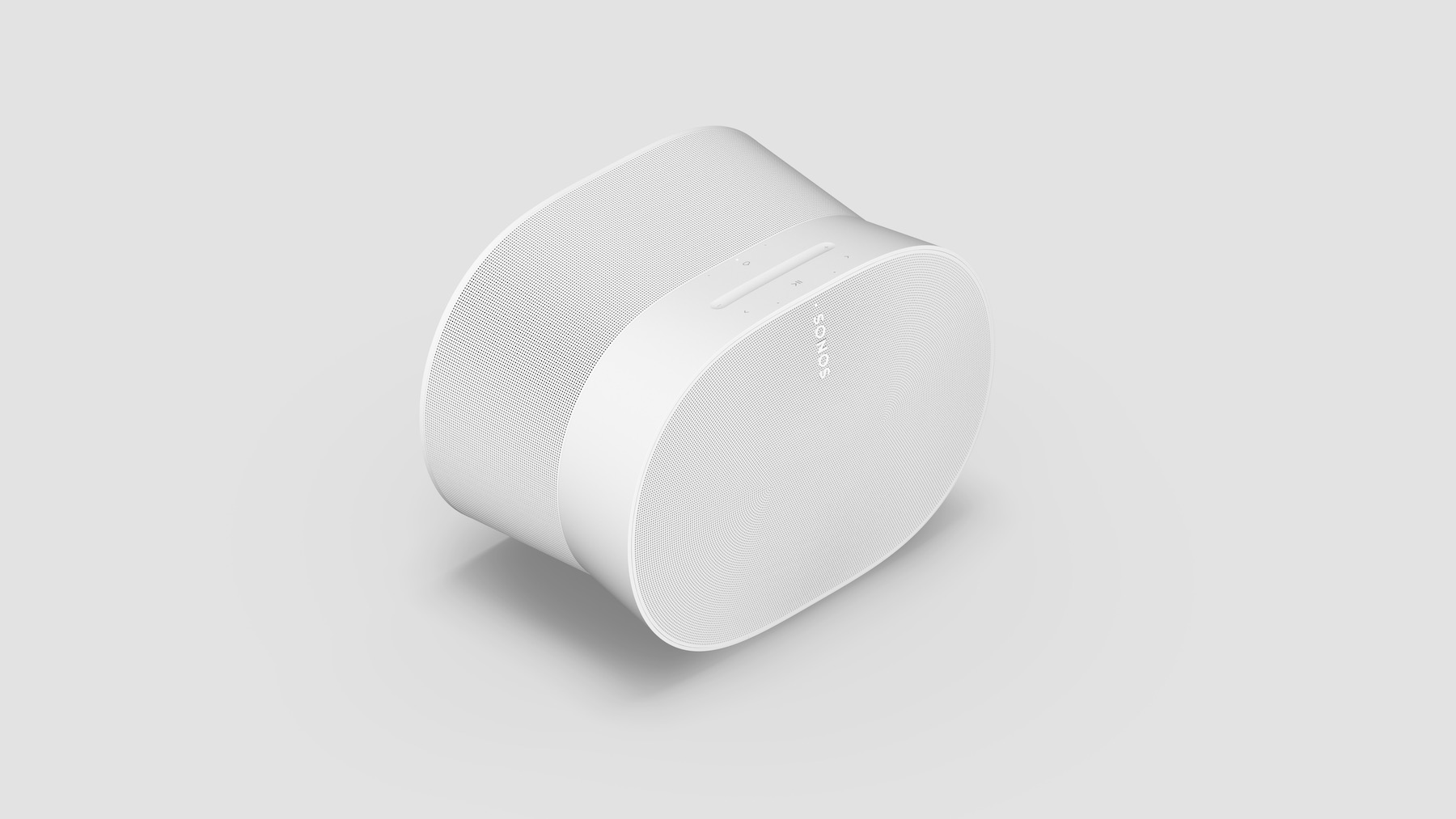
Bluetooth: 5.0
Connections: Wi-fi, AirPlay 2, Bluetooth, USB-C line-in
Dimensions: 16 x 26 x 18.5cm
Weight: 4.47kg
With the Era 300, Sonos has raised the bar for wireless speakers. It has an unparalleled sense of scale, versatile connections options (turntable? Yes please!), and a unique design. The fact it slips seamlessly into Sonos's ecosystem is the cherry on top.
Pros
- Immense scale
- Detailed sound
- Wide streaming support
Cons
- Pricey
- Adapter costs extra
- Divisive design
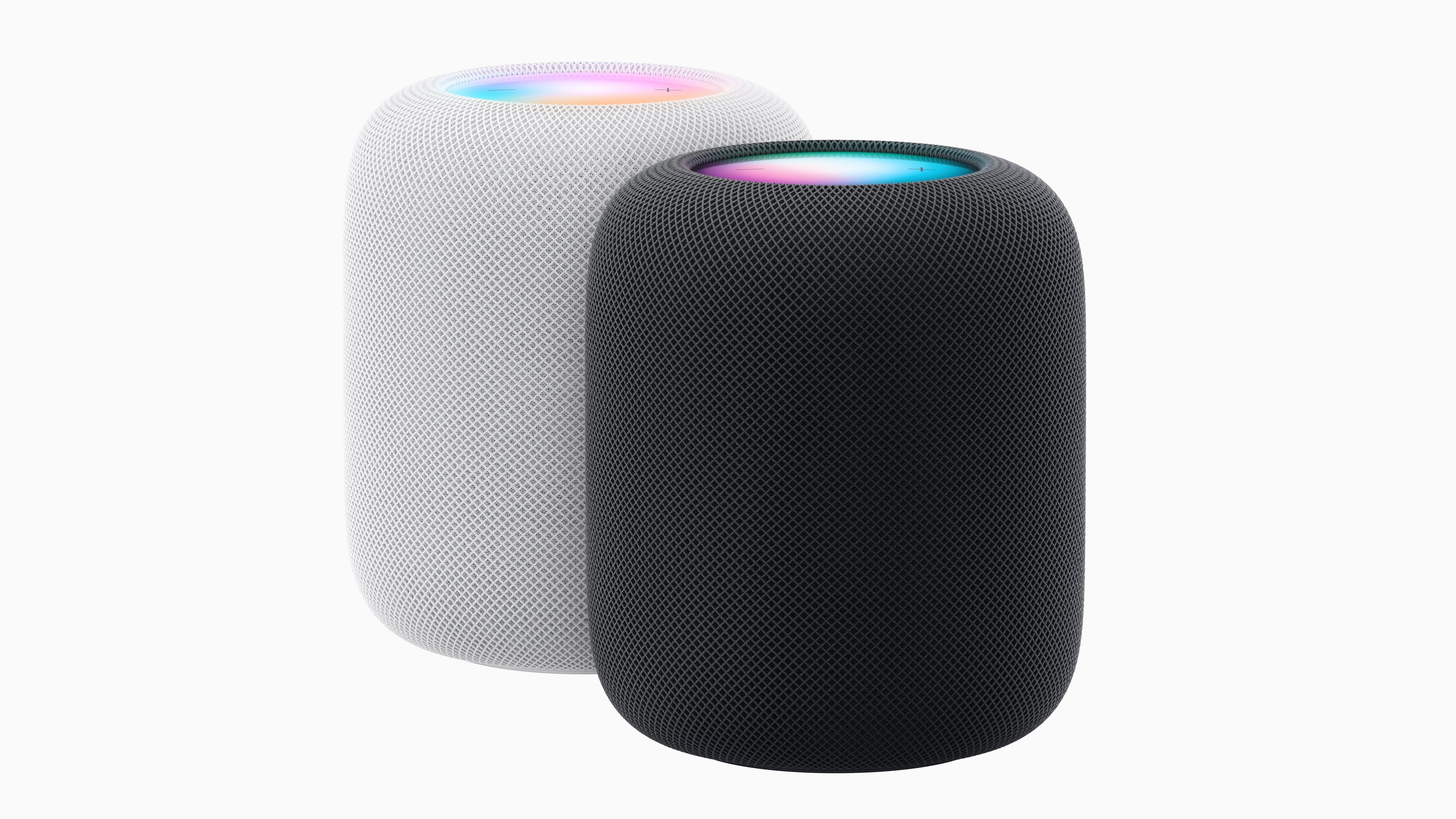
Bluetooth: 5.0
Connections: AirPlay 2
Dimensions: 14 x 14 x 16.8cm
Weight: 2.3kg
The HomePod 2 remains one of our favourite smart speakers, but in light of the Era 300, it's lost a little of its shine. It still sounds fantastic and is very easy to use, but it can't compete in terms of sound or versatility. But it is quite a bit cheaper.
Pros
- Energetic sound
- Very user-friendly
- Brilliantly well made
Cons
- Strictly for Apple die-hards
- Siri can't control Spotify
- Could sound more direct
Sonos is probably the biggest name in multi-room audio, but with Apple, Amazon, Google and more getting in on the act, it's faced some stiff competition in recent years. Now the company is hitting back with the Sonos Era 300, its most versatile speaker yet.
With Bluetooth, spatial audio and a unique design, it's certainly an impressive proposition. But is it better than the five-star Apple HomePod 2? We put the two speakers side by side to find out.
Sonos Era 300 vs Apple HomePod 2: price
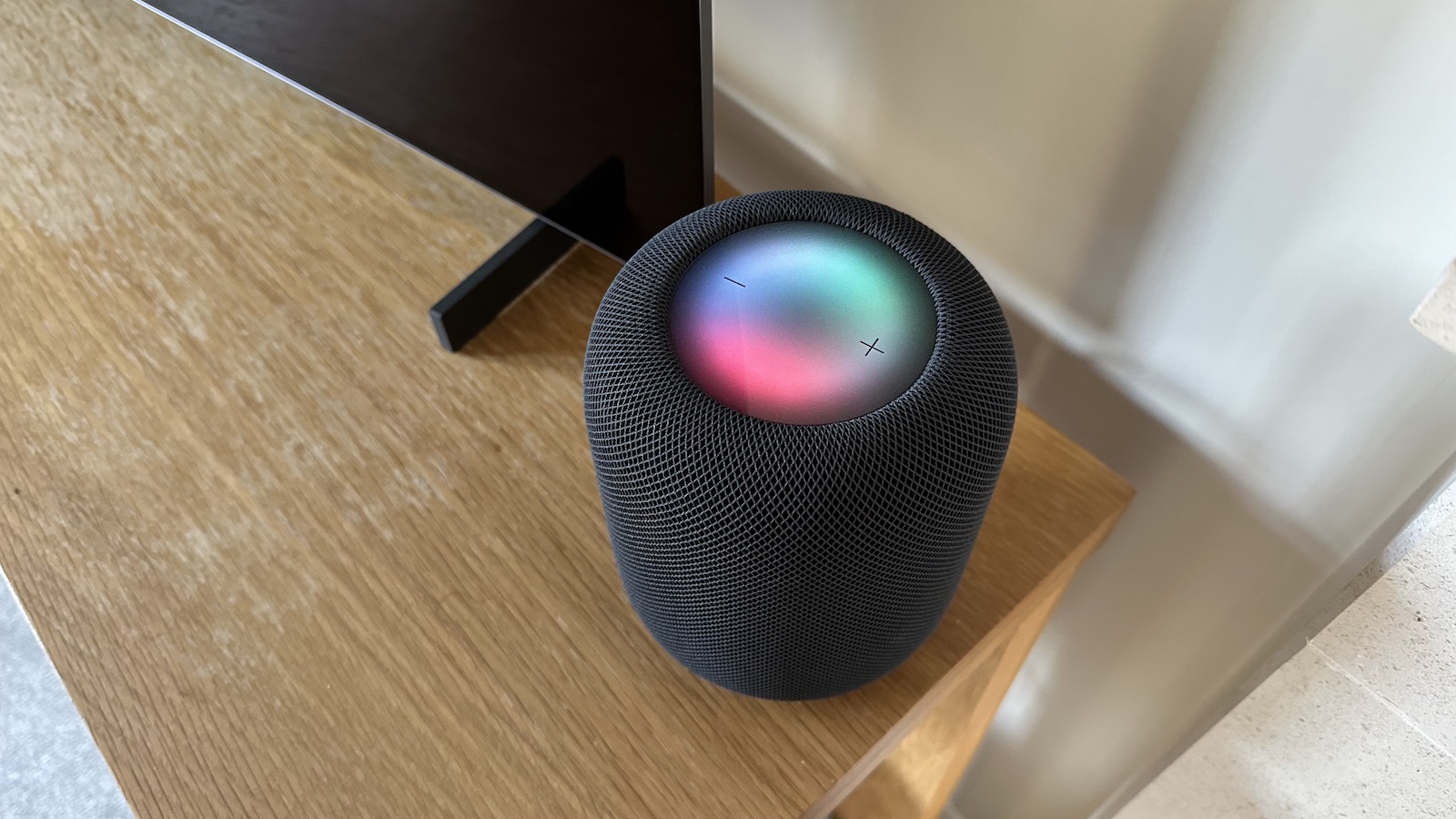
Both of these smart speakers are premium, well-featured devices, and their prices reflect that. The HomePod 2 launched at £299 / $299 / AU$479, which is at the pricier end of the smart speaker scale. This being an Apple device, its price has held firm – you might find it on a slight discount every now and again, but don't expect to see hundreds knocked off the price.
The Sonos Era 300 packs plenty of technology and a new eye-catching design, so it too commands a premium. In fact, at £449 / $449 / AU$749, it's actually more expensive than Apple's smart speaker. Again, Sonos kit rarely goes on sale, but keep an eye out come Amazon Prime Day and Black Friday, you never know your luck.
**Winner: Apple HomePod 2**
Sonos Era 300 vs Apple HomePod 2: design
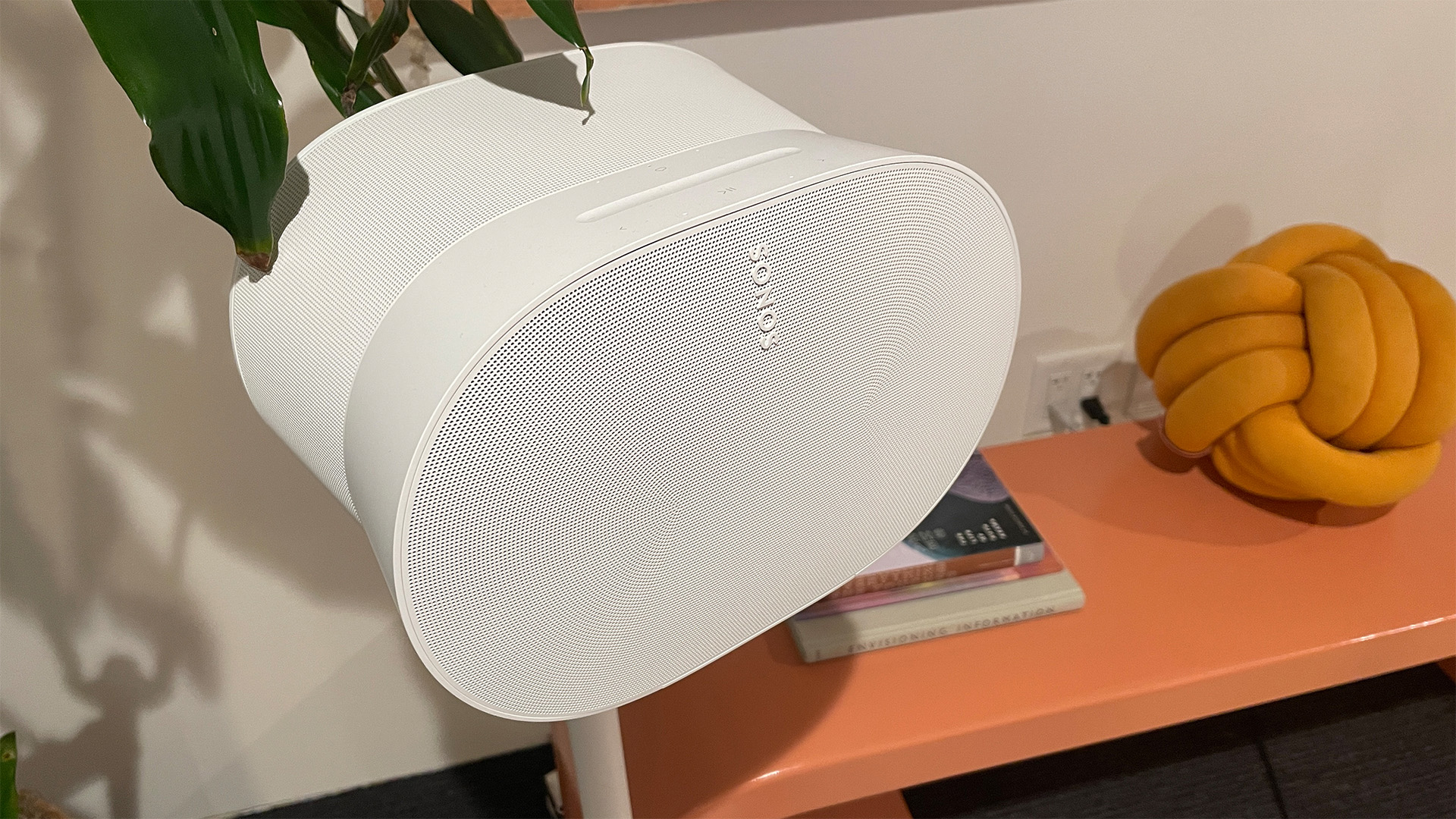
Sonos has branched out into different types of speakers of late – think soundbars and portable models – but its standard home speaker models have generally looked a bit uninspiring. They're basically either vertical or horizontal rectangular boxes. But the Era 300 takes a whole new approach, boasting a unique cinched hourglass design that looks like no other smart speaker on the market.
And it's not just for aesthetic purposes. Like all the best designs, it serves to enhance the functionality of the speaker too – in this case, to fire sound out at all angles to help with the spatial audio feature.
The latest hi-fi, home cinema and tech news, reviews, buying advice and deals, direct to your inbox.
There are some neat touches. The control panel on the top has an enhanced volume slider (which is recessed like a trough), and it works seamlessly with other Sonos speakers.
The HomePod 2 looks a little dull by comparison, but we can't fault the quality of the unit and woven mesh coating. From a design perspective, it's nigh-on identical to the original HomePod, albeit slightly shorter. The touch panel on the top has also shrunk a little, though more of it illuminates when chatting with Siri, which is a very pleasing effect to the eye.
It's also slightly lighter than the original HomePod, though feels just as solid.
Apple has stuck with its winning design, which makes sense given the quality of the original HomePod. But for innovation alone, Sonos might take this round.
**Winner: Sonos Era 300**
Sonos Era 300 vs Apple HomePod 2: features
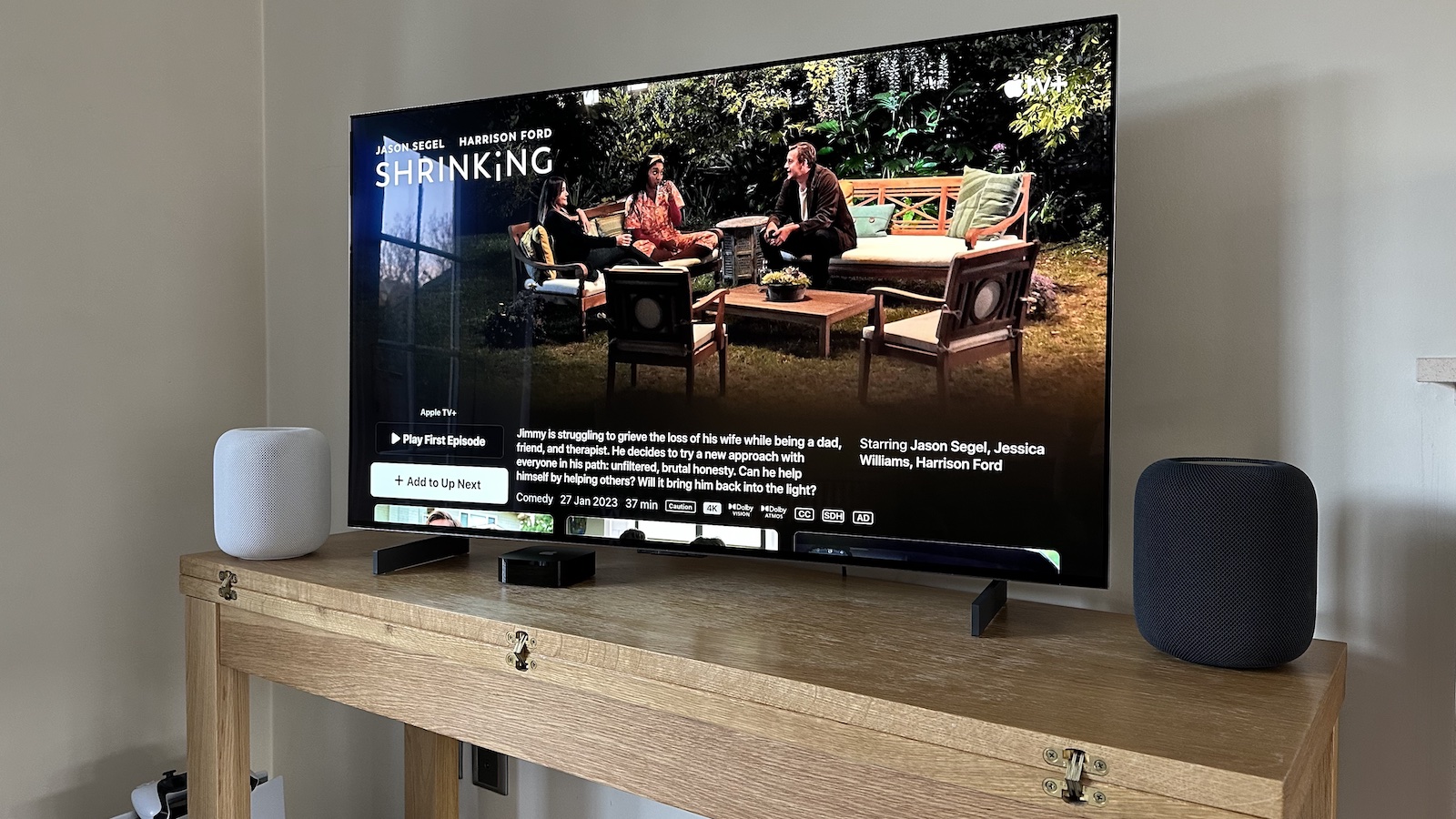
This is where the Sonos Era 300 really excels. It's Sonos' first home speaker to offer Bluetooth – previously this was exclusive to its portable models the Roam and Move – so you can beam content to it wirelessly from your mobile device. It also comes with a USB-C line-in, so you can hook up an external sound source like a turntable. (Although note: you'll need Sonos's Line-In Adapter and an auxiliary cable for wired connections – but both are sold separately; the Line-In Adapter is £19 / $19 / AU$35).
Again, this isn't completely uncharted territory for Sonos (line-in features on the flagship Sonos Five), but having both features is a real selling point, making the device much more versatile in terms of what music source you can partner it with.
This being a Sonos device, of course, it has wi-fi 6 and AirPlay 2 as well for streaming and multi-room capabilities. And it can handle 24-bit/48kHz audio from Qobuz and Amazon Music.
But the real feather in its cap is spatial audio with Dolby Atmos. Thanks to the Era 300's unique shape and six-driver arrangement, it's perfect for creating the kind of immersive soundscape that makes spatial audio so immersive. There's a woofer on both the bottom left and right sides each, with waveguides for the tops. The top-firing tweeter will bounce audio back off the ceiling to help create the spatial audio/Dolby Atmos effect, while a waveguide in the front should deliver crystal clear vocals and instruments.
During a briefing, Sonos' principal product manager (hardware) Ryan Moore told us: "The goal with Era 300 was really to create the best standalone spatial audio experience of any single speaker."
That's no idle boast, as you'll see in the next section. There is one drawback, however – spatial audio isn't supported across the board. While you get a decent selection of spatial audio tracks from Amazon Music Unlimited and Apple Music (the latter from 28th March, when the Era 300 goes on sale), Tidal isn't supported, not yet anyway. Fingers crossed that'll change soon.
Other extras include voice controls (Sonos's own and Alexa, but no Google Assistant here), and audio optimisation thanks to Trueplay for iOS users and, for the first time, Android too. Trueplay works to optimise the speaker's sound to the room it's in, and it works with the well-featured and seamless Sonos app, through which you can add and play from a huge range of streaming services and internet radio stations.
It can also work as a stereo pair with another Era 300, and as rear Dolby Atmos speakers in a surround sound set-up (up to 7.1.4) with Sonos's Arc and Beam Gen 2 soundbars.
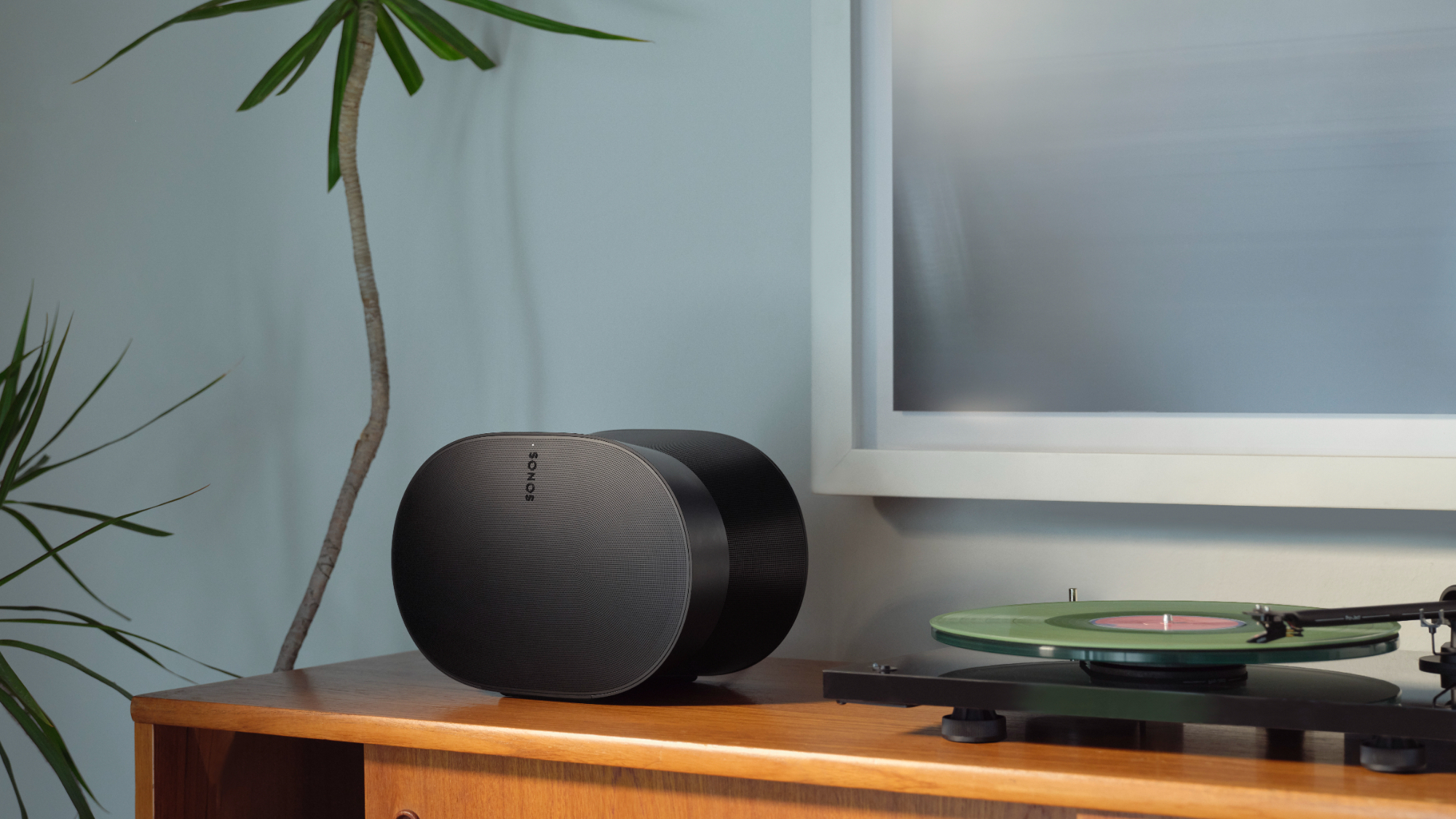
The HomePod 2 flips convention on its head, with a woofer at the top and tweeters at the bottom. Unlike the Era 300 which needs an app to initiate it, HomePod 2 can analyse its surroundings and optimise its audio output automatically, whenever it's picked up and placed elsewhere. And the speed at which this happens is nothing short of astonishing. A 'Reduce Bass' function (accessed through the Apple Home app) is a nice touch – and a godsend to party-averse housemates – while voice controls come courtesy of Apple's Siri.
Spatial Audio also plays a starring role in the HomePod 2's skillset, with Apple Music integration key to its musical success. And while Spotify, Tidal and Amazon Music are supported services, you can't control them with voice controls. Rather you have to play them via AirPlay 2 from your mobile device, which introduces an unnecessary middleman to the process. The same goes for non-Apple radio stations.
Like the Era 300, the maximum resolution files supported are 24-bit/48kHz. And the HomePod 2 has added new smart home skills – as well as controlling devices like smart light bulbs, thermostats, blinds and security cameras, it also has integrated humidity and temperature sensors, so it can turn on a dehumidifier when the humidity hits a certain level, for example. We know, we're What Hi-Fi?, not Good Housekeeping, but still, it's all part of the HomePod package.
The HomePod 2 does have Bluetooth, but crucially, there are no physical ports for hooking up audio sources like a turntable. And for us, no number of humidity sensors can make up for that. For Sonos's Era 300 to truly succeed as the best 'standalone spatial audio single speaker' however, we'd like it to support tracks from all music services.
**Winner: Sonos Era 300**
Sonos Era 300 vs Apple HomePod 2: sound
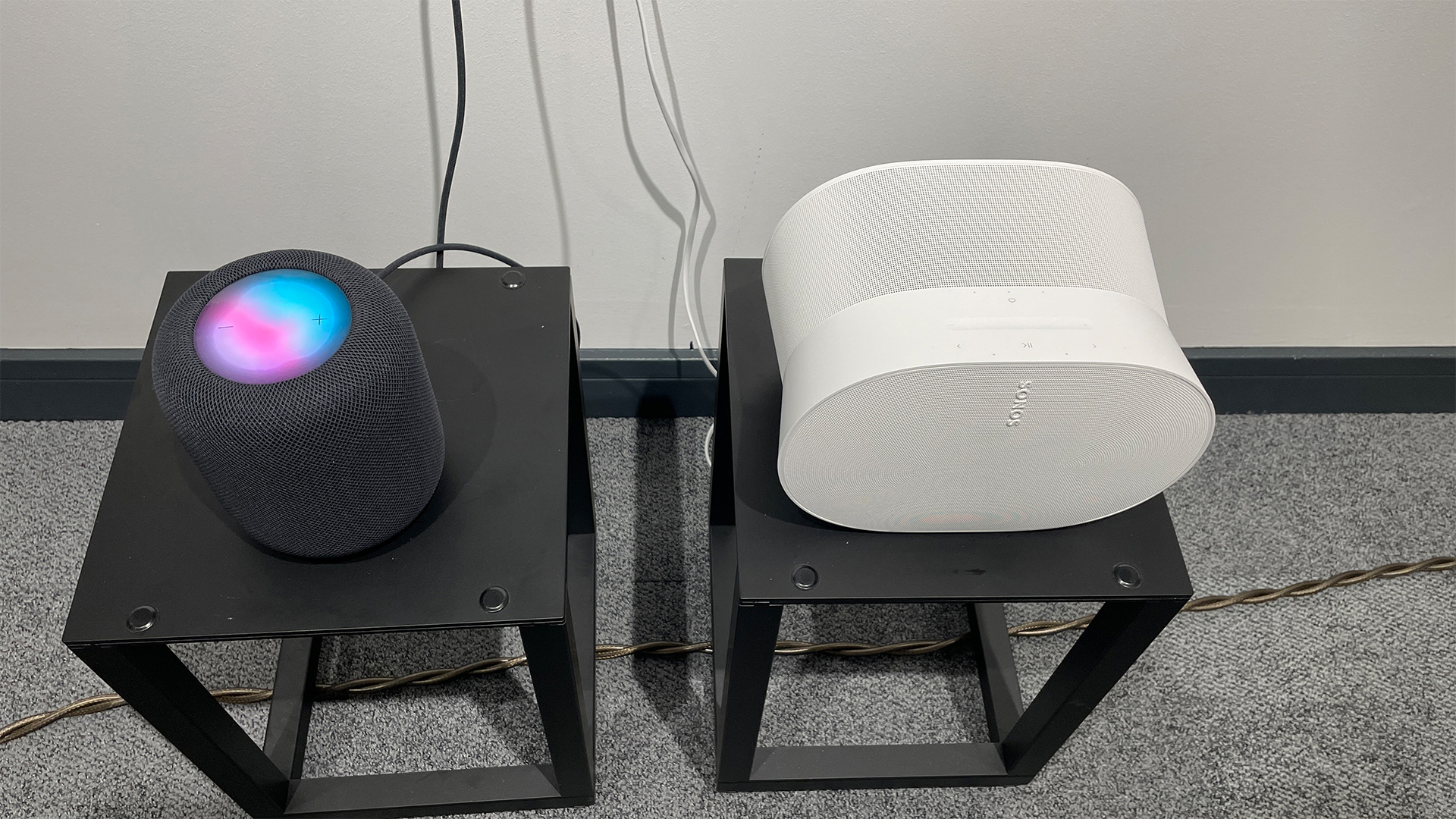
What hits you first about the Era 300 is the sense of scale. Sound is spread far and wide, so much so that you struggle to believe it's coming from a single speaker box. Quite simply, it projects sound further into the room and overhead more confidently than any other similar wireless speaker we’ve heard.
It all sounds very solid and cohesive, too, whether you're listening in spatial audio or bog-standard stereo. The rhythm is grippy, with plenty of grunt and texture in the low end, while vocals float through the wonderfully spacious soundfield without a hint of brightness.
Fire up spatial audio and the sound truly fills the room. It's a more immersive experience than we've encountered from a speaker of this size, at this price.
The HomePod 2 is very adept at handling Spatial Audio tracks from Apple Music, showcasing additional vocal tracks with plenty of warmth and clarity. Apple Lossless tracks sound superb too, fizzing with energy and excitement without any rough edges. And there's more bass than you would expect from a speaker this size.
So how do they compare? The HomePod 2 retains its rich texture and wonderful sense of musicality, but it sounds decidedly small-scale next to the Era 300. In general and also in particular with spatial audio tracks, the Era 300 outdoes the HomePod 2 in every way. There’s more power and punch, more convincing shifts in dynamics and emotions, and there is more detail and subtlety around each note. The Era 300 relays the rich harmonies and decaying reverberations around the piano notes in Whist by Chilly Gonzales, while Massive Attack's Angel sounds breathtaking with its cavernous scale and gut-punch impact of the plunging, deep bassline.
The Era 300 might be pricier, but you can see where your extra money goes.
**Winner: Sonos Era 300**
Sonos Era 300 vs Apple HomePod 2: verdict
From a design and specs perspective, the Era 300 certainly gives the HomePod 2 a run for its money. That extra versatility could be the deal-breaker that convinces non-Apple users – or those with only one foot in the Apple ecosystem – to pick it over the HomePod 2. And the sound? It's superb, creating a truly immersive listening experience that's truly captivating. It sounds – much like it looks – like nothing else around.
But the HomePod 2 remains a superb smart speaker. Well-built, effortlessly usable and with awesome sound quality, it's a great showcase for Apple Music. Those firmly in the Apple ecosystem will certainly find a lot to enjoy.
MORE:
Read our full Sonos Era 300 review
Apple HomePod vs HomePod 2: which is better?
Here's our HomePod 2 vs Sonos One shootout
Which Sonos speaker should you buy? Find out here
Joe has been writing about tech for 20 years, first on staff at T3 magazine, then in a freelance capacity for Stuff, The Sunday Times Travel Magazine (now defunct), Men's Health, GQ, The Mirror, Trusted Reviews, TechRadar and many more. His specialities include all things mobile, headphones and speakers that he can't justifying spending money on.

